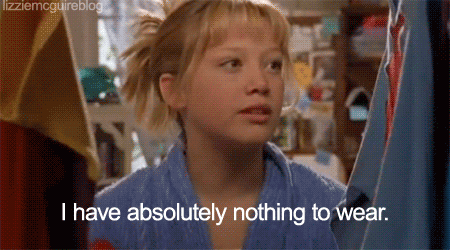Australians spend billions on impulse buys driven by emotion. Here’s how budgeting, planning, and mindful spending can help break the cycle.
How often have you seen a new gadget while scrolling through Instagram or TikTok, and next thing you know, it’s arrived on your doorstep.
Or what about going into a shop to exchange a pair of jeans, but you’ve come out with four new shirts?
Guilty - Uniqlo is too damn tempting.

We’ve all been tempted by impulse buying before, it’s a universal experience.
Despite the high cost of living in recent years, the average Australian still splurges $44 a week on impulse purchases. That’s $47.5 billion nationwide! And for young Australians (Gen Zers) that amount increases to a whopping $74 a week.
We’re talking everything from an iced-coffee to beauty products to new tech gadgets.
So what is actually causing us to make impulse purchases, and how can we bring that unnecessary spending down? We’ve got you covered.
One of the biggest triggers for impulse buying is our emotions.
Put simply, we often buy stuff to make ourselves feel good.
Shopping can give us a dopamine hit when we need it.
Humans + shopping = chemistry. Literally.
Outside pressure can also make it easier to make impulse purchases, for example social pressure to live a certain lifestyle.
The first step to tackling impulse buying is recognising what makes you most likely to impulse buy, and using different strategies to redirect that money towards your financial goals.
Yes yes, we know you’re sick of us harping on about budgets, but boy oh boy do they help.
At the end of the day, you won’t be able to make progress with your finances until you know what your current spending sitch is, and what you’re aiming to work towards.
So tackling spending has to start with creating a budget, and we’ve got all the steps covered in our Budgeting Academy.
When you’re tempted to buy something immediately, give yourself a cooling off period, at least 24 hours.
That way you give yourself time for the initial emotions to simmer, and can look at the purchase more rationally.

Research shows that if you shop while you’re hungry, you’re likely to spend more.
And not just on food, even on non-food items.
Hunger makes us want to acquire more things so an easy way to curb overspending is to simply eat a solid meal before you hit the shops.
Before you head out grocery shopping, make a list of all the items you genuinely need.
Or, if you need new clothes, a new work-from-home set up, list out which specific items before you start browsing online.
Having a list helps define our “needs” and makes it harder for our “wants” to blend in with our “needs”.
If you reckon you’re prone to impulse spending, this is a big one.
BNPLs and credit cards make impulse spending far more accessible for us.
We’re not spending with our own money, so it feels like there’s no money leaving our bank accounts, when in reality we’re stacking up debts we didn’t need to have.

A lot of the time, our brains act like stubborn children.
If you tell us not to do something, we want to do it even more.
Being too strict on spending habits can be just as detrimental as being too relaxed about them.
If you budget a small amount of money to splurge on your desires, it’ll be a lot easier for you to stick to your budget, while also having a healthy relationship with money.
Sign up for Flux and join 100,000 members of the Flux family